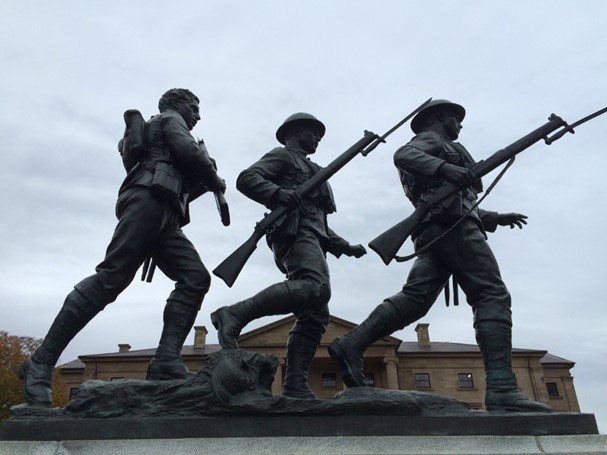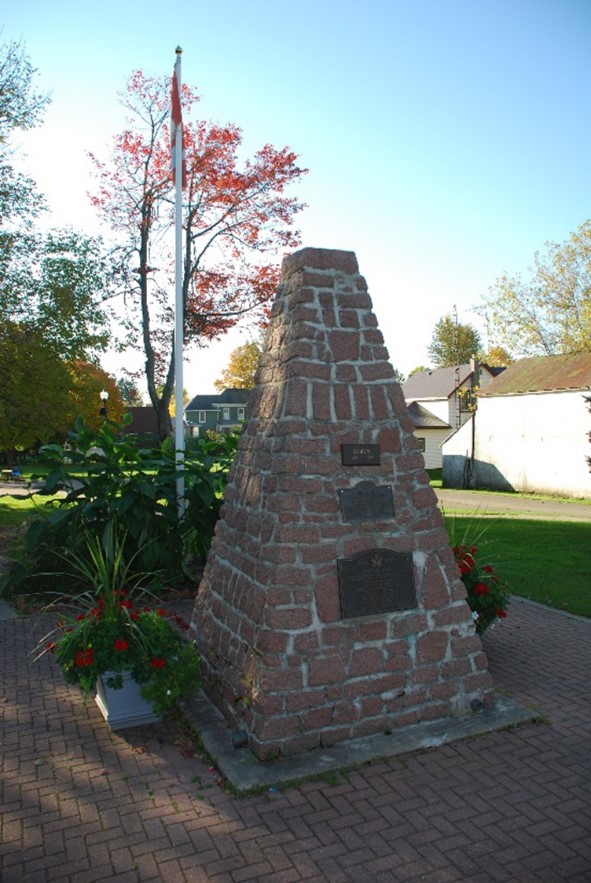Lest We Forget project extension: investigating monuments
Introduction
This document offers an extension to the Lest We Forget project hosted by Library and Archives Canada (LAC).
Learning objective
Students will explore local monuments to determine the intention behind their construction, including their location and the significance of the words and symbols inscribed on them. Students will come to appreciate that monuments can be complex in design and have varying degrees of significance and relevance depending on the era in which they were built.
Researching the names inscribed on a cenotaph is an opportunity for students to explore a community's commitment and sacrifice during the World Wars, the Korean War and other military conflicts. At the same time, investigating the monument itself is a rewarding learning exercise that opens the possibility to multiple interpretations from students.
Background
There are many types of monuments located in communities across Canada and around the world. Monuments serve a variety of purposes, which differ depending on the needs of a community or the intent of a group or organization responsible for their construction. As well, the significance of the values and beliefs that monuments symbolize can sometimes change over time. This can result in some monuments becoming controversial.
Let's take a closer look at one prominent Canadian monument: the cenotaph in Victory Square, in Vancouver, British Columbia. The location of the cenotaph is significant and the name Victory Square is strategic. The square was named in 1922, shortly after the Great War. Two years later, the cenotaph was unveiled. At the time, this area was the legal and financial hub in the city centre of Vancouver.
Certain questions arise when analyzing this cenotaph. In this instance, would you consider the geographic location of this park and monument a reflection of a community's commitment to the Great War? What do you believe is the message the city wished to convey by naming this area Victory Square? How is this monument similar to or different from other Great War monuments? Consider monuments such as the Vimy Monument or the St. Julien Brooding Soldier in Belgium.
Starting point
A cenotaph is a specific type of monument constructed in remembrance of the people of a community who died during a military conflict. The bodies of these individuals are usually buried elsewhere. Generally, monuments commemorate a person, place, or event. Looking closely within a community you can often discover that several monuments (including a cenotaph) exist. Sometimes, the symbols used to embellish a monument or the meaning in its design can be controversial. For example, a nation's flag etched into a cenotaph could encourage patriotism or nationalism. Alternatively, a cross on a cenotaph could connect Christian values and beliefs to the war dead, or a dove added to the design could symbolize peace.
To understand why a monument exists, students need to investigate the entire site. For example, students must explore the symbols and words inscribed on a monument, the materials used to build it, and its size and geographic placement. Is there designated space around the monument, such as benches, green space or a park? If so, what message is the community wishing to convey by having it built in a particular location? In examining the photograph, do you believe the City of Vancouver intended to establish an active living space within Victory Square while at the same time allocate a space to commemorate the dead? If so, why?
For example, the photo on the left is the Charlottetown Veterans Memorial located in front of Province House in Charlottetown, Prince Edward Island. What does the middle infantry soldier stepping over a German Pickelhaube helmet suggest about the overall intent of the cenotaph?
Research
As students investigate the monument, they can ask themselves the questions listed below. These questions are to promote discussion and multiple answers are possible.
- Why was the monument built?
- Was the community or a group within the community influential in having it built? Why would this be important information to know?
- When was the monument built?
- What was the intention behind its construction? Does your community use the monument for a particular purpose?
- Do you think the monument is still relevant to your community? If so, how and why?
- How has the community perceived the monument and used it over time? Has the use of the space changed?
- Identify what values and beliefs align with the intention behind the monument's construction?
- Are there other examples of monuments in your community? If so, are any of them controversial? Can you map or chart the range of perceptions, and possible rationale for each, with respect to the monuments?
- Was the community or a group within the community responsible for the construction of the monument? If a group was responsible, does that group still exist in the community?
- Are there ceremonies or events held where the monument is located? Have these changed over time? What would explain these changes?
- Can you connect the symbols on the monument to the intention behind its construction?
- What are the connections, if any, to similar events, whether they are historical or contemporary?
- Is the location of the monument significant? If so, explain why. What, if anything, would you recommend be done to change, contextualize, or move the monument?
- How do people in the community and beyond view the monument today?


